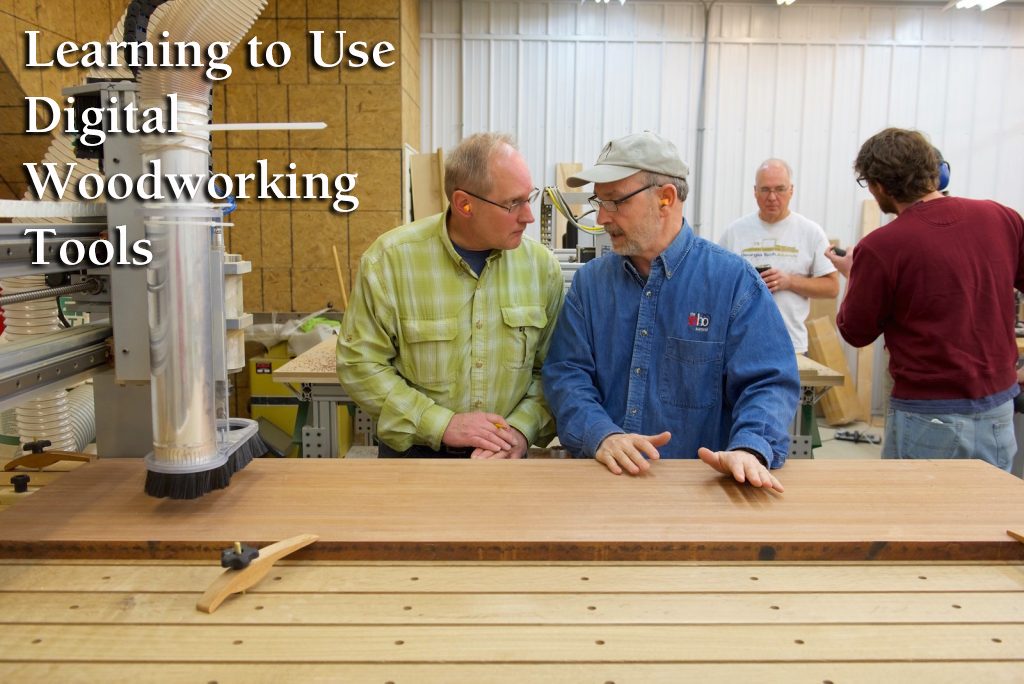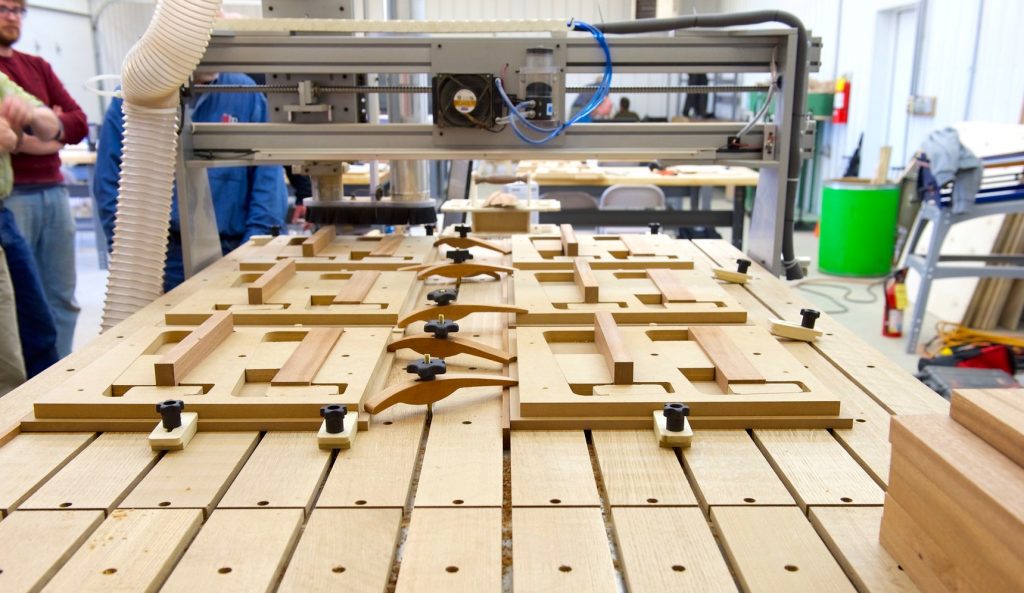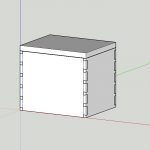We may receive a commission when you use our affiliate links. However, this does not impact our recommendations.

Digital woodworking benefits from the same kind of in-person training as hand tool woodworking. Photos courtesy of Mark Sterner
The most common questions that I hear are about how to go about learning to use digital woodworking tools? And, as woodworkers how do you use these tools to get the best out of them? In this post and the one following, I’ll point out different ways to learn how to use these tools. First an overall view. Then some suggestions on different ways to learn how to use digital tools.
Digital Tools are Different
Comparatively, using these tools well is similar to being really on top of hand tool and hybrid woodworking. It’s that magic point where your skill and experience have reached a level so that on any project, you think through what needs to be done and know how to build it right with the tools and techniques you have. That’s very satisfying. It’s exciting when it sinks in that you know that you can pretty much create anything that you can design. When you really get comfortable with digital woodworking, it’s that way too. It becomes almost a different kind of thinking.
From the outside perspective, there’s a lot going on in digital woodworking. It looks complicated. Unlike simpler tools that usually have a single purpose and the focus on using them is on physical skills and techniques, the digital world has a lot of new and different parts, processes to keep track of and possibilities to think about. That means there are new things for woodworkers to learn. The good news is there are some excellent resources to learn from.
Digital woodworking is about computer controlled hardware, software, new processes, procedures and how you apply it and create with it when working with wood. That’s different than the hybrid and hand tool woodworking methods most of us use.
First, some excellent news. In practice, both old and new methods have far more in common than you’d think. Woodworking is ultimately a problem-solving adventure involving thinking your way through mechanical problems. For many of us, that adventure is part of the fun of woodworking.
The differences between old and new are mostly about the tools and the order of how things are done. When using hand and hybrid tools, you work through your challenges during the process of making and assembling a project. In digital woodworking, much of that same kind of problem solving takes place up front, as you’re designing, planning and preparing. That’s where software and computers come in. Like you may have learned your hand tool skills, there’s proven ways to learn digital skills. And, I think you’ll find them familiar.
Apply Mechanical Thinking
All types of woodworking, even digital, use the same kind of logical mechanical thinking. Figuring out how to make something with a CNC is similar to what you’re doing now using other tools. As with any tool, it’s important to understand how the tool should be used. The limitations of what can be done with a CNC is close to a tool you probably already know, a router. So, if you think about what a router can do using your woodworking knowledge and experience, you’ve got a pretty good idea of what’s possible with a CNC. The difference is that a digitally controlled router works very precisely in 3 dimensions pretty much anywhere within the working envelope of the machine you’re using. Even on one of the smaller hobbyist focused machines that would be 24” x 36” x 6”. That’s a lot of space. And a lot of possibilities. And even more fun.

One of the great benefits of digital woodworking is precision and repeatability. Notice the large holding clamps in the photo holding the fixtures in place. Using pin registration, we’re making 12 of them at a time in this class. Photos courtesy of Mark Sterner
Different Tools Require New Learning
Since this new world involves computers, software and digitally controlled machines, the process is naturally different. So, expect that adding digital tools means that there are new things to learn and new skills to develop. Learning to work with software tools during the design and planning phases of a project is the first task. Working with the mechanics and capabilities of the CNC machine and applying woodworking know-how is the next task.
We’ll get into choosing and learning software are subjects in themselves with good classroom and self-paced online learning options at a later time. Learning the overall concepts and the fundamentals of the mechanical processes for setting up and running a CNC properly, benefits from some kind of instruction. Just like you might pick up a particular technique or new skills in a hand tool class or workshop, the approach to learning works in digital woodworking.
Where to start
Obviously, you should always start by reading your manual that comes with your machine. Unfortunately, I’ve yet to see one that is well designed and barely more than safety procedures and specifications. There is no real content to help you get started. None of them walks you through basic routines or provides you with step-by-step examples of simple tasks. This could be done much better. I really hope manufacturers work on this.
What about the internet? The internet works well for certain kinds of learning. But, so far, there are few solutions for the interactive learning needed to get the best out of digital tools. Learning online is usually limited to watching videos. Think of it this way, if you’ve ever taken a hand tool skills class where the instructor works directly with you on every little detail from how to hold and use a dovetail saw for perfect cuts to tricks for chopping out pins and tails then you’ll understand the difference between learning a skill online and in person.
There are several in person solutions to learning how to use digital woodworking tools. I’ve got a nice list of suggestions that I’ll share in my next post.
Here are some supplies and tools we find essential in our everyday work around the shop. We may receive a commission from sales referred by our links; however, we have carefully selected these products for their usefulness and quality.









